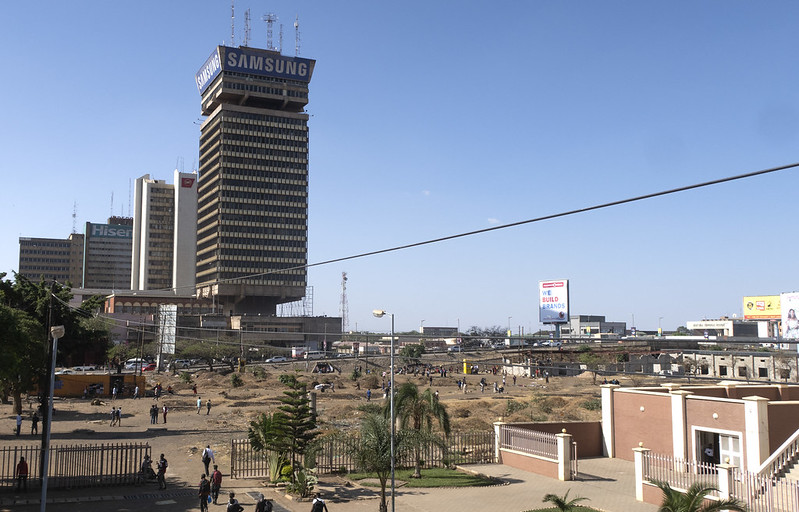Zambia’s Creative Cures to Combat Its Housing Crisis
 Globally recognized as having one of the highest levels of poverty and inequality, Zambia has a long journey ahead to overcome this poverty, which was further exacerbated following the COVID-19 pandemic. However, arguably the greatest factor prolonging the struggle against poverty is its housing crisis. A shortage of quality and available housing leads to social unrest, the spread of diseases, medical challenges, water insecurity and limited employment opportunities. Therefore, the Zambian government has identified improved housing as one of its top priorities. It is developing creative cures to combat its housing crisis.
Globally recognized as having one of the highest levels of poverty and inequality, Zambia has a long journey ahead to overcome this poverty, which was further exacerbated following the COVID-19 pandemic. However, arguably the greatest factor prolonging the struggle against poverty is its housing crisis. A shortage of quality and available housing leads to social unrest, the spread of diseases, medical challenges, water insecurity and limited employment opportunities. Therefore, the Zambian government has identified improved housing as one of its top priorities. It is developing creative cures to combat its housing crisis.
Why the Housing Crisis Arose
- Social factors: Zambia is not only experiencing a rapidly growing population, approximately 19.6 million as of 2021, but it is also projected to double in the next 25 years. It stands out as “one of the world’s youngest countries in terms of median age.” A population largely of working-age people results in an increased demand for jobs, support and housing at a rate that the current development cannot match.
- Rapid economic development: Zambia has become rapidly urbanized over the last few decades, perpetuating rising incomes and employment opportunities. Although this is a hugely positive step forward in the fight against poverty and insufficient economic and industrial operations, the rate with which these changes have come about has surpassed developments in infrastructure. This has exacerbated the housing deficit, at 1.5 million homes in 2023, but is projected to increase to three million by 2030. As a result, 70% of Zambia’s urbanites live in slums, necessitating creative cures to combat the housing crisis.
- Existing poverty: Although recent urbanization and industrial development have elevated the economic status of many Zambians, such progression has yet to penetrate rural populations. The main reasons for this are “while the agricultural sector is projected to grow, it hardly accounts for population growth and the sector is subject to high volatility.”
The economic situation remains unstable and unpredictable. “More than 61% (2015) of Zambia’s 19.6 million people earn less than the international poverty line of $2.15 per day.” This means that although there are not enough houses to be purchased by those who have benefitted from the recent economic prosperity, a significant portion of the population still faces financial constraints preventing them from affording any available developed housing.
- Legislation: Apart from an insufficient number of houses, there are also issues with legislation around property ownership. The process of registering land takes an average of one year, leaving people without homes yet already engaged in the economic process of purchasing land. Current legislation fails to guarantee access to land, housing finance and security of tenure, as well as materials and skilled labor workforces. Challenges extend beyond legally securing the right to build or own a property, encompassing hurdles in the physical processes of construction and maintenance.
Steps Taken To Overcome the Housing Crisis
Although the housing crisis in Zambia constitutes a serious challenge, many methods are being researched and introduced. Zambia’s creative cures to combat the housing crisis strive to balance the housing deficit and address those areas of the population for whom property ownership remains economically inviable.
- Innovative construction methods: The Zambian government seeks to develop more economically and environmentally friendly construction materials as one of its creative cures to combat the housing crisis. Through public-private partnerships and with financial support from the Ministry of Infrastructure, Housing and Urban Development (MIHUD), a skilled labor force is being trained to “develop stabilized soil bricks,” offering a “low-cost and sturdy material for constructing quality houses.”
- Technology: The Land Survey Amendment Act of 2021 has promoted the “digitization of records to speed the process of title deeds,” so far addressing “approximately 300,000 records.”
- Financial support: For those with a monthly income of more than ZMW6,600 ($398), “Zambia Home Loans” offers supplementary financing for construction and land purchases. There are also more affordable schemes for those with less economic security. “Rent-to-own programs” provide more short-term housing opportunities, allowing renters to gain employment and economic security from a stable home. Alongside financial aid to potential renters and buyers, the Zambian government is providing funding for the construction of properties, signing agreements with “unions and banks to construct more than 40,000 units within the next decade,” constituting a “$1.4 billion investment for programs across the country.”
- Nonprofit support: The MIHUD works alongside private players to deliver “low-cost units for households residing in informal settlements.” Private partners include The Horizon Properties and Habitat for Humanity Zambia. Habitat for Humanity targets the nation’s most vulnerable groups. As a humanitarian organization, it has a plethora of programs in place to target areas such as water and sanitation needs as well. By actively participating in property construction and facilitating interest-free mortgages (micro-loans), the organization aims to promote housing security at all stages of the home-owning process.
Conclusion
Although it is undeniable that the housing crisis in Zambia is a serious challenge in the battle against poverty, the Zambian government and many other internal and external organizations have made it their mission to devise creative cures to combat the issue.
– Chloe Thomas
Photo: Flickr
